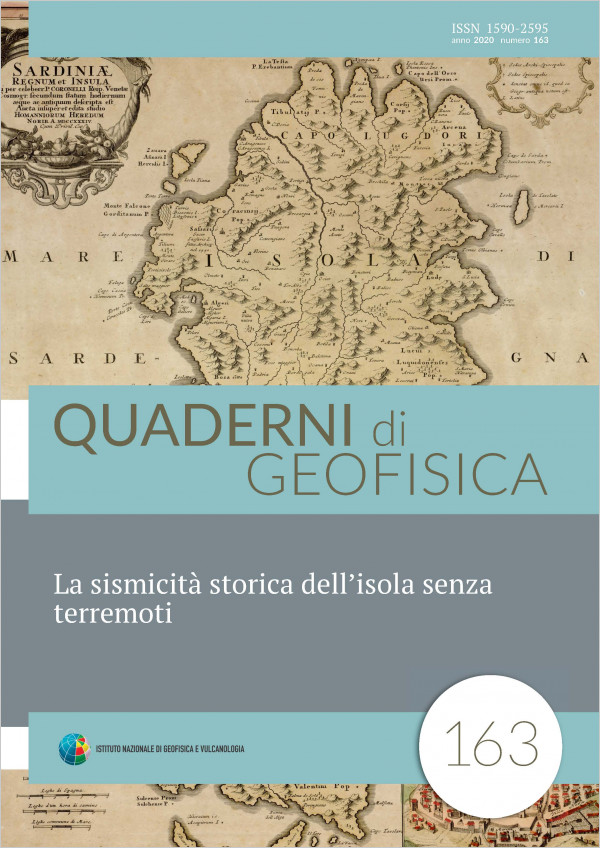La sismicità storica dell’isola senza terremoti
Main Article Content
Abstract
According to popular opinion, Sardinia is the only non-seismic region in Italy. Most researchers would probably confirm this opinion, with qualifications. Historical earthquake catalogues, up to CPTI11 [Rovida et al., 2011], report only one Mw 5.1 event on 13 November 1948: it was located in the Sardinian Sea, and had very modest effects on land. In later decades, the seismic networks did record very few earthquakes of moderate energy (Mw <5), mostly located off-shore, either south-east of Cagliari or west of Olbia or in the Sea of Sardinia. The most recent ones (occurred in 2000, 2004 and 2006) had very slight effects on the island. Given the low level of instrumental seismicity and the weak macroseismic effects of known historical earthquakes, Sardinia's seismic risk is perceived as very low.
The low seismicity of the region certainly has a geological explanation, given that the Corsica-Sardinia block is among the most stable areas of the Mediterranean basin. “Low”, however, does not mean “non-existent”: recent historical research has improved knowledge on the major known historical earthquake of Sardinia (it occurred on June 4, 1616 and was responsible for minor but widespread damage to the system of coastal watchtowers, south-west of Cagliari) and rediscovered several minor earthquakes, part of which were known to the seismological tradition but had been almost completely forgotten. This paper collects all the documentation available at present on the seismic history of Sardinia.
The low seismicity of the region certainly has a geological explanation, given that the Corsica-Sardinia block is among the most stable areas of the Mediterranean basin. “Low”, however, does not mean “non-existent”: recent historical research has improved knowledge on the major known historical earthquake of Sardinia (it occurred on June 4, 1616 and was responsible for minor but widespread damage to the system of coastal watchtowers, south-west of Cagliari) and rediscovered several minor earthquakes, part of which were known to the seismological tradition but had been almost completely forgotten. This paper collects all the documentation available at present on the seismic history of Sardinia.
Article Details
Section
Article

This work is licensed under a Creative Commons Attribution 4.0 International License.

